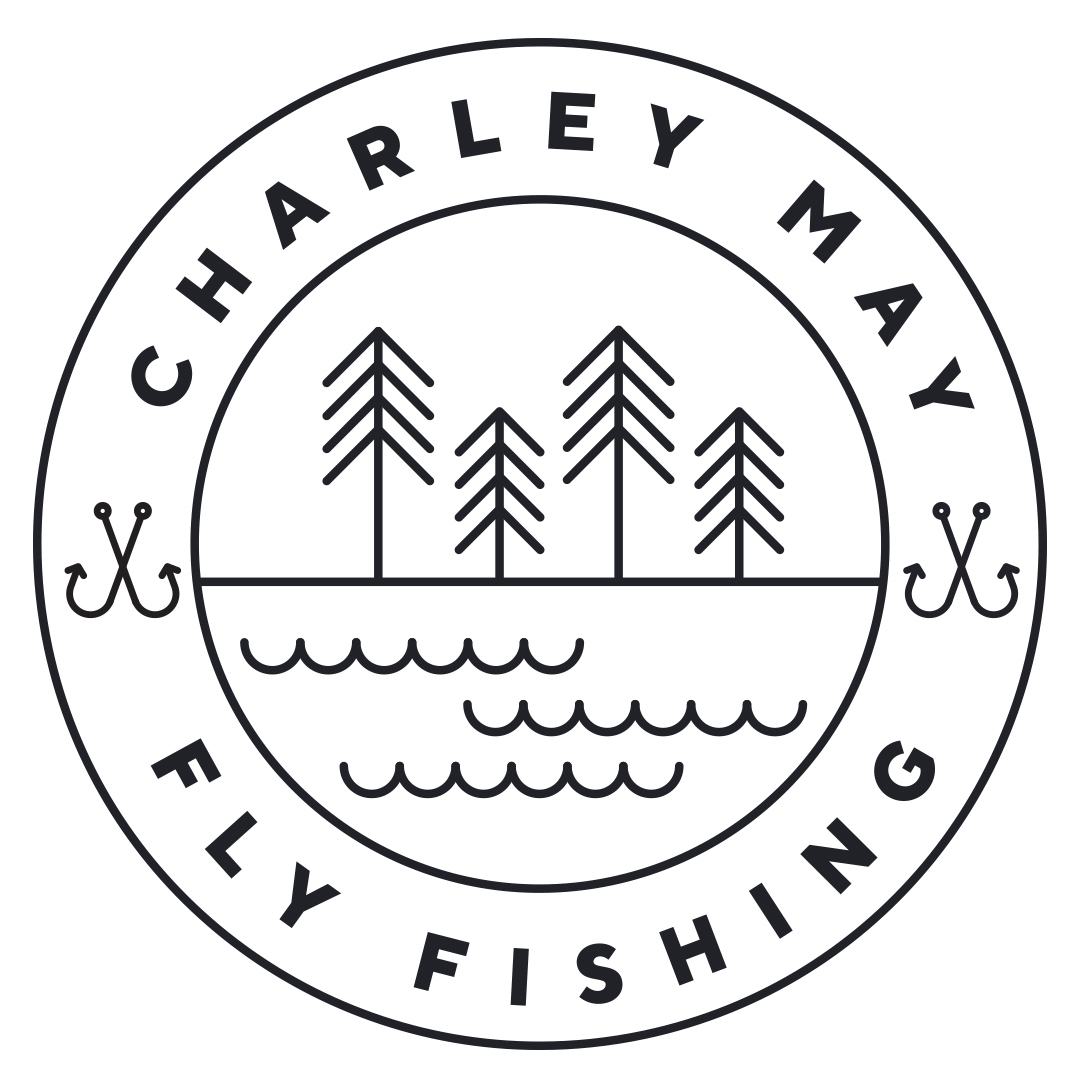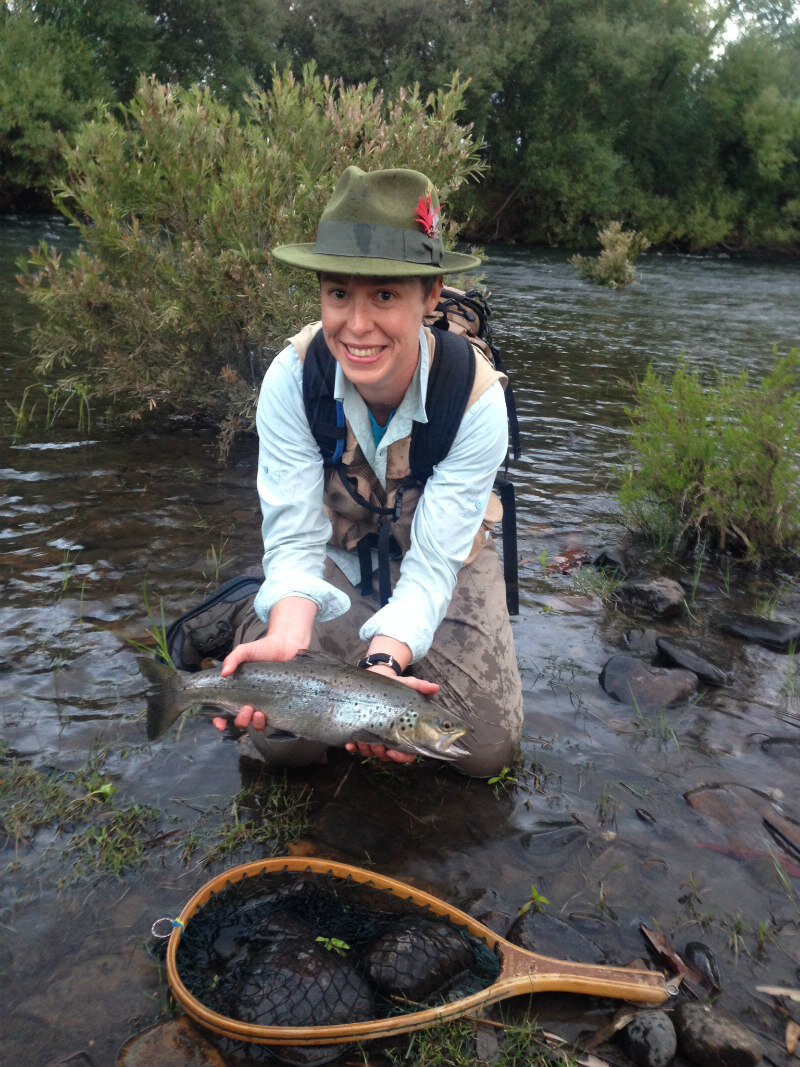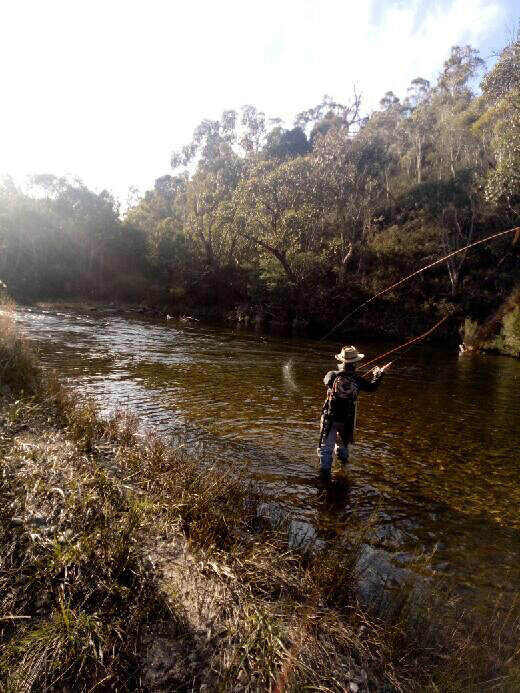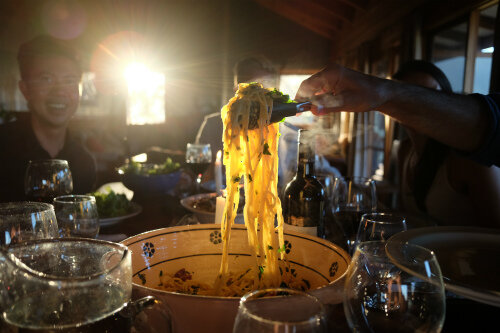Fishing the gem streams of the Glen Valley
/I discovered the Glen Valley in 2011 and have visited it every year since. The reason is simple. There is nowhere else on earth that makes me feel as calm and connected with myself and the world around me as this place. It’s here I’ve met some of my best friends, mended a broken heart, and had some truly epic fly fishing adventures. I recently met someone who shares my love for the region and they asked me to talk to their Seattle based angling club, Northwest Fly Anglers, about why it’s so special. Here’s what I said.
Welcome to the Glen Valley
A six-hour drive from Melbourne, the Glen Valley runs between the townships of Omeo and Mitta Mitta on the Omeo Highway. It’s here my gem streams can be found - these are Big River (the name given to the upper reaches of the Mitta Mitta river), the Bundara and Middle Creek. The Cobungra River can also be found here but I don’t fish it as much as the others so I’m not going to talk about it here. All these waters are part of the Upper Murray Basin and are tributaries of the Mitta Mitta river system.
Summer sunset in the Glen Valley
Overview of the Mitta Mitta catchment
The Victorian portion of the Upper Murray Basin covers an area of 10,150 km2 and is subdivided in two components: The Mitta Mitta River catchment and Northern section.
The Mitta Mitta catchment covers the lion's share and comprises the upper tributaries of the Mitta Mitta River including all my gem streams.
These streams are fed from rain and snow that fall on the High Plains, around Falls Creek and Mt Bogong, before joining the Mitta Mitta and eventually flowing into the Dartmouth Dam that sits in the centre of the catchment.
Downstream of the Dartmouth Dam, the Mitta Mitta winds north-westerly taking in other waters before flowing into the Lake Hume near Tallangatta.
This is a highly controlled river system with flows regulated by the Dartmouth and Hume reservoirs. All of the water captured in the Mitta Mitta catchment is destined for the mighty Murray River - arguably Australia’s most important waterway and one that powers much of our agricultural sector.
The current structure and management of the catchment is radically different to how things were prior to European settlement. And if you’d asked indigenous Australians what they thought, they’d probably tell you life was much better before we came along!
And it’s I think it’s important we investigate this because it sets the scene for where we are now and the current fishing opportunities that await us.
The High Plains in the Victorian Alps
Indigenous history of the Upper Mitta Mitta river
The traditional owners of the Upper Mitta Mitta region are the Yaithmathang. They travelled and lived through the valleys of the region, camping in the valleys of the Mitta Mitta, Bundara and Cobungra rivers in winter and moving up to the high plains in the spring and summer.
The Yaithmathang moved to follow the food and forage the bush tucker that was seasonally available. They also actively managed the landscape through firestick burning.
This burning was strategic and controlled based on their deep understanding of the landscape and done to open up the canopy to encourage the growth of understory plants that attracted animals they could hunt and promoted the growth of bush tucker items.
This regular and tactical burning ensured a good food supply for the indigenous people and reduced fuel build-up and the likelihood of serious hot wildfires. As a result, they helped a rich landscape that supported a plethora of birdlife, fish and native Australia animals.
When Europeans first arrived in the region in the 1830s they spoke of a wildlife wonderland with all kinds of waterfowl and a prolific native fishery.
European settlement in the region and the impact on the fishery
Early European settlers who arrived in the region spoke of fine fishing in the mountain zones of the Mitta Mitta, the Cobungra and Bundara rivers for ‘bluenose’ and ‘white eye’. These were the colloquial names given to native species of trout cod and Macquarie perch. Further downstream, other native species such as Murray cod, silver perch and blackfish were also common.
However, at the dawn of the 20th century, trout cod and Macquarie Perch had disappeared from many of the rivers in the mountain zones.
By the 1970s only small populations of trout cod and Murray cod were present in the lower reaches of the Mitta catchment. And after the completion of the Dartmouth Dam in 1979, a small but healthy population of Macquarie perch persisted in the dam but downstream of it, populations of cod all but disappeared.
Causes of decline …
Whiteman’s arrival and the discovery of gold in the Mitta Mitta region in the 1850s sounded the death knell of indigenous knowledge and culture and kicked off the decline of native fish populations.
Mining caused massive environmental damage to many waters in the catchment and the resulting poor water quality has been implicated in damaging the fishery.
Land clearing for agriculture was another menace that was bad for the region’s catchment and allowed a serious flood in 1870 to shift massive amounts of sediment into and down the upper Mitta Mitta river impacting water quality.
Serious bushfire and subsequent flooding events in 1919, 1926 and 1939 were reported to have killed large numbers of fish.
Overexploitation of the fishery by Europeans significantly impacted populations of native fish and the arrival of trout and other non-native species have also played a role in their decline.
And ‘river improvement’ works, carried out by government agencies in the 1950s and 1960s, removed snags and logs from the river that destroyed habitat considered important for cod.
The construction of the Dartmouth dam in 1979 and subsequent alterations to the natural flow regime have been implicated in the disappearance of resident Murray cod downstream of the dam. Today, thanks to conservation efforts, habitat restoration and warmer water resulting from changed management of the system during the past decade of drought, cod are making a comeback in the lower Mitta Mitta River.
However, truth is that when it comes to native fish, the Mitta Mitta catchment isn’t in great shape compared to pre-colonial days. But it is recognised as one of Victoria’s best trout fisheries - and this is the main reason I was drawn to it nearly ten years ago.
Striking gold on the Mitta Mitta
Gem streams of the Glen Valley - the Bundara River
I’m going to talk about the three waters I know most - the Bundara River, Middle Creek and Big River - which is the name of the mountain section of the Mitta Mitta River.
The Bundara is a glorious stream that’s very accessible. A gravel public road runs pretty much parallel to the river for about 2 miles along the Bundar valley.
The beautiful Bundara River
This is a double-edged sword because it makes it a popular choice among anglers, so in the high season, you do sometimes have to jostle for a good spot.
At the end of the valley, the river heads up into some real wild country and this can be accessed through a private property owned by a lovely fella called Russell Smith. If you knock on his door with a big smile and a bottle of whiskey he lets you fish it. Some of the best fishing can be found up here.
The river offers a range of riffly runs, glides and deep pools. In my nearly 10 years of fishing it, it’s always been solid water. I’ve never had a dry day on it and some days have been truly legendary in both numbers and sometimes size of fish.
Cha ching! Money shot moment on the Bundara River
Gem streams of the Glen Valley - Middle Creek
This is where I caught my Australian personal best brown trout. This fella was pushing nearly 5lb. I was fishing with a French guy who was gobsmacked when I took this monster from such small water on a size 14 elk hair caddis at about 9:30am on a summer morning in 2018.
Small water can hold big rewards
Middle Creek can be easily accessed off the Omeo Highway but it’s very different water to the Bundarra.
It can be quite twiggy and is much harder on the body because it’s very overgrown in sections and you have to scramble over rocks and fallen trees. You need to be quite fit and nimble to enjoy it and I would recommend fishing this with a friend because if you got into trouble you’d need a mate to help get you out.
The stream is punctuated by quite a few big rocks and this creates quite a bit of pocket water. Now while this doesn’t look as tempting as some of the runs and pools, it should be worked hard because in my experience this is where some of the good fish hold.
There are also sections where it opens up and there are some awesome long runs and deep pools where big fish lurk. When they’re feeding on the surface, it’s some of the most exciting dry fishing I’ve had in Australia.
Those competent at roll casting off both shoulders and bow and arrow casting who present flies well will do well on this water. I use an 8ft 4 3 weight rod for both the Bundarra and Middle Creek.
Gem streams of the Glen Valley - Big River
This is much bigger water and I switch up to 9ft 6 weight. The scenery is pretty epic but one of my favourite things about fishing this river is getting to cast alongside platypus who swim quite close if you’re quiet enough.
Big River in summer
This has happened to me many times, particularly when I’m fishing an evening rise. I’ve been standing waist-deep in water and I see water move next to me. In the early days, I thought it was a fish but then I saw a funny little head with a duck beak, a brown furry back and a little beaver looking tail and I knew it was a platypus. They’re a size the river is healthy and I never tire of seeing them.
The water itself is a classic river full of riffles, big runs, long glides and very deep pools. It’s big, powerful water at times so you have to be pretty careful if you’re wading it.
There are some big fish in the Mitta Mitta. Up to 6 lbs. I’ve never caught one but I’ve seen a friend land a monster on a European nymph rig. He was fishing a tail of a deep pool and his indicator slowly but surely went under and I knew he’d got a sandbag on the end.
There is no photo. You won’t believe it but in the excitement, I dropped my phone in the river and off it went forever! Along with the fish that was huge.
Gem streams of the Glen Valley - what do the fish eat?
In terms of what flies to pack, it all depends on when you go.
The season opens in spring in September and closes in winter at the start of June. In spring, we get hatches of various mayfly including the iconic Kosciuszko dun as it’s affectionately known. This is the largest mayfly found across the waters of southeastern Australia so it’s important to include this pattern in the fly box.
The shaving brush - a pattern tied to represent an emerging mayfly - is another key fly to pack. It’s brought me a lot of success in the early season. I’d recommend packing a few different sizes as picky trout will often fall to a bigger or smaller fly depending on their preference.
Shaving brush fly pattern - effective in the Glen Valley in spring
Clink Hammers, pale morning duns and parachute adams patterns in various shades and sizes should come along for the ride too.
When it comes to nymphs, hare ear, prince nymph, flashback nymphs, caddis pupa nymphs, Czech weapons and pheasant tail nymphs all work well.
In late spring and early summer, the waters come alive with caddis - particularly in the early morning and evening. Some of the caddis species on the Bundara, Middle Creek and Big River are quite white in colour. And the fish can be pretty pedantic about this when they’re selectively feeding.
Bright white caddis fly pattern
I remember one particular occasion - because I happened to drop a very good fish - when I switched flies - all caddis patterns - three times to get an eat.
First, I threw a light coloured elk hair caddis, then an F-fly and finally I scratched around in my fly box and found a bright white caddis pattern. I presented it beautifully and I watched a big shadow emerge from under a ledge and gulp down my bright fly.
My heart was thumping and didn’t set the hook right. I had him on for about 5 seconds but he shook his head hard and then I watched him shoot downstream. Anyway, I have to let it go!
High Summer - in January and February is all about grasshoppers and crickets. The banks buzz with them. They come in many different sizes and colours but when it comes to flies, yellow, green and pale brown patterns work really well. Dave Whitlock’s ‘Dave’s Hopper’, the Klod Hopper, Moorish hoppers, tri foam hoppers and Wee Creek hoppers are all very effective.
Moorish hopper pattern - deadly in the Glen Valley in January
Autumn sees hatches of various mayfly and para adams patterns of different sizes work well at this time as do orange and black spinners. It’s worth noting that I’ve also had a lot of success with generalist patterns like the stimulator, royal wulff and royal humpy.
Bushfires in the Glen Valley: a shadow over paradise
By now, I’ve hopefully inspired you about why you need to fish the rivers of the glorious Glen Valley. However, the recent bushfires cast a shadow on these waters and many of you might be wondering whether they’re worth the effort.
The world watched as over 17 million hectares were burned across the country, hundreds of homes were lost, and scores of people died.
In Victoria, between November 2019 and February 2020, 1.5 million hectares were razed and much of it ripped through prime trout fishing country, including the Glen Valley.
Scientists have estimated that millions and millions of mammals, birds and reptiles perished in the fires.
Luckily, the government made massive efforts to go into the bush when it was safe to do so to rescue and temporarily remove rare and at-risk animals to prevent extinction including many aquatic species. But there is no denying that the extent and severity of these fires will, unfortunately, lead to the permanent loss of a number of species.
Bushfires in the Glen Valley: impacts on freshwater ecosystems
It’s all pretty depressing and I have shed many tears over it. But having spoken to scientists and fellow anglers who’ve witnessed other bushfires in the High Country and seen rivers bounce back, I feel hopeful.
Apart from the initial heat shock, many streams experience during a bushfire, when the waters can literally boil. The biggest threat comes from post-fire rains that wash in huge amounts of ash, soil and dead animals into the waterways.
Unfortunately, this is exactly what happened in many places after the 2020 bushfires. Once the heavens opened, there was no canopy to protect the ground or any vegetation to hold the soil in place in the impacted area and the waters filled up with fine sediment and debris that can be deadly to stream inhabitants.
Once the ash settles, oxygen levels in the water can plummet because bacteria in the water will start breaking down the carbon in the ash and in the process consume dissolved oxygen. All this can create very challegning conditions for fish and aquatic creatures.
Bushfires in the Glen Valley: glimmers of hope in the darkness.
Yet, when I returned in June this year, there were glimmers of hope. While the Cobungra and Bundara Rivers had clearly suffered, with significant bank erosion and very visible black ash siltation in their river beds, Big River and Middle Creek both looked very healthy.
Big River in June 2020 looking healthy
However, fishing was quiet. In fact, over two days, I only managed to get one bite on my fave section of Big River and a pan-sized fish in the Bundara that I swiftly returned.
I was hugely relieved by this and even more encouraged when I spoke to a couple of scientists at the Victorian Fisheries Authority.
In their experience of studying bushfire affected rivers for over 20 years, they have found that while the initial impacts on trout fisheries appear devastating, trout populations bounce back provided habitat is relatively intact and there are connected unaffected populations to recolonise affected areas. Luckily, Dartmouth Dam and areas of Big River provide a safe haven and stock of trout to do just this.
The results from a study they did after the 2006/07 bushfires, in the Ovens, Kiewa and Upper Goulburn catchments, showed that although brown trout recruitment can be affected in the year after bushfires, the recovery of trout populations in catchments only affected by the bushfire is typically rapid and occurs within 1-2 years. In areas that had experienced not only bushfires but also floods, the recovery of trout populations took 2-5 years.
In addition, feedback from prominent trout fishers six months following the 2006/07 bushfire events was that trout fishing was extremely productive, with high catch rates and large fish due to low competition.
One can only hope the story of recovery is similar in the Glen Valley. And I believe it will be because fire has always been a part of this landscape and while it was particularly harsh this year, nature has a way of healing.
The sun going down in the Bundar valley
So, hopefully, once we’ve got Coravirus under control and we’re allowed to travel freely again, the Glen Valley will be once again glorious and you will be tempted to visit this part of the world which I promise will steal your heart. See you there soon!
Where to stay in the Glen Valley
Head straight to Packer’s High Country Horse Riding for rustic, comfortable accommodation and true High Country hospitality.
















